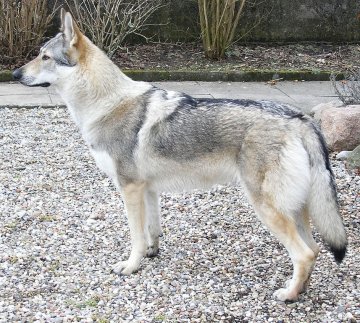Wolf Hybrid

The notion that a wolf can be crossbred with a dog is not something out of an adventure tale. Both dogs and wolves are canines and can be interbred quite easily. In fact, there is a long and storied tradition among those who love exotic animals to purchase such a unique wolf hybrid breed.
Breeding a Wolfdog
The proper name for a wolf hybrid is a wolfdog. Such a creature is a mix of a gray wolf and a common domestic dog breed. The actual veterinary name for a hybrid is a canid hybrid. Wolves are known as Canis lupus and dogs are known as Canis lupus familiaris.
Debate over Breeding
There is some debate over how many generations a dog may have wolf in it to be considered a hybrid. Informally, there are dog rescue and animal lover organizations that state a hybrid would be a dog that has wolf in it dating back as far as five generations. Generally, there are three domestic dogs that are most commonly bred with wolves. These dogs are German Shepherds, Alaskan Malanutes, and Siberian Huskies.
Wolfdog Population
The number of wolfdogs in the United States is far higher than some people realize. In 1998, the number was estimated to be about 300,000. Other estimates raise the figures as high as 500,000. As a result, the fact that wolves and dogs cross breed is not something that should be considered all that rare of an occurrence.
History of Cross Breeding
Dogs and wolves have been breeding with one another since prehistoric times. The earliest records of breeding the two dates back to about 10,000 B.C. Historical records indicate one reason the creatures were crossbred is so they could have a better chance of hunting down woolly mammoths.
Many modern breeds of dogs are believed to have wolf genes in them based on breeding from many centuries ago. The Kunming Wolfdog and Lupo Italiano would be two examples, but there are many more.
Care and Safety
Caring for these hybrids is not easy if the canine is a recent spawn of a wolf and a dog. Expert care must be employed to not only ensure the proper care of the animals, but also the safety of humans who come in contact with one.
